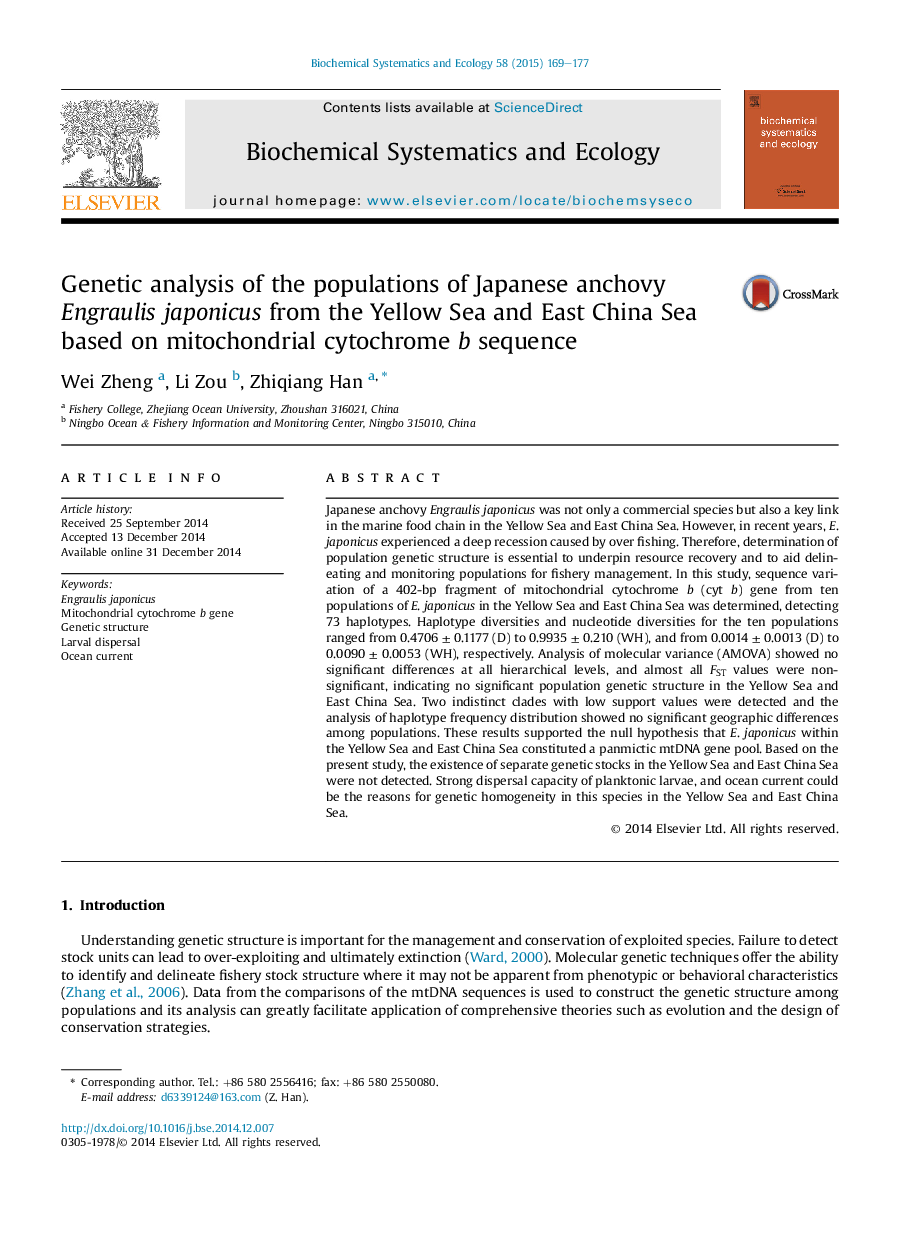| Article ID | Journal | Published Year | Pages | File Type |
|---|---|---|---|---|
| 1353882 | Biochemical Systematics and Ecology | 2015 | 9 Pages |
Japanese anchovy Engraulis japonicus was not only a commercial species but also a key link in the marine food chain in the Yellow Sea and East China Sea. However, in recent years, E. japonicus experienced a deep recession caused by over fishing. Therefore, determination of population genetic structure is essential to underpin resource recovery and to aid delineating and monitoring populations for fishery management. In this study, sequence variation of a 402-bp fragment of mitochondrial cytochrome b (cyt b) gene from ten populations of E. japonicus in the Yellow Sea and East China Sea was determined, detecting 73 haplotypes. Haplotype diversities and nucleotide diversities for the ten populations ranged from 0.4706 ± 0.1177 (D) to 0.9935 ± 0.210 (WH), and from 0.0014 ± 0.0013 (D) to 0.0090 ± 0.0053 (WH), respectively. Analysis of molecular variance (AMOVA) showed no significant differences at all hierarchical levels, and almost all FST values were non-significant, indicating no significant population genetic structure in the Yellow Sea and East China Sea. Two indistinct clades with low support values were detected and the analysis of haplotype frequency distribution showed no significant geographic differences among populations. These results supported the null hypothesis that E. japonicus within the Yellow Sea and East China Sea constituted a panmictic mtDNA gene pool. Based on the present study, the existence of separate genetic stocks in the Yellow Sea and East China Sea were not detected. Strong dispersal capacity of planktonic larvae, and ocean current could be the reasons for genetic homogeneity in this species in the Yellow Sea and East China Sea.
